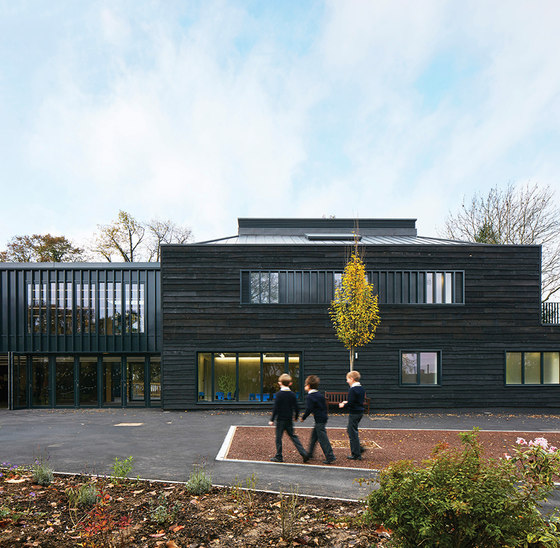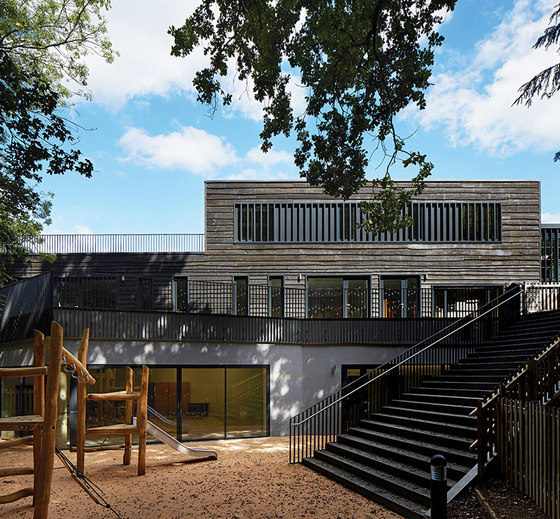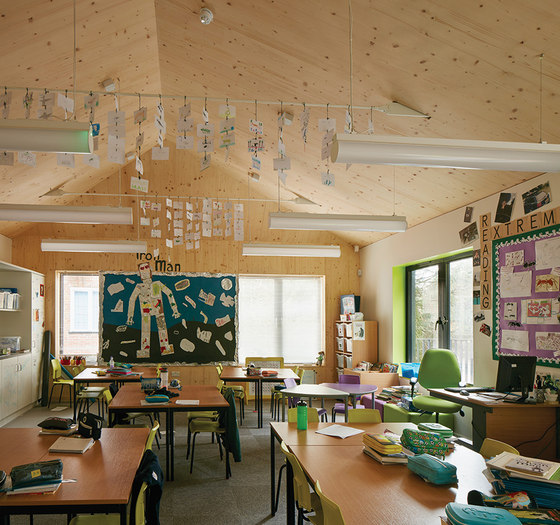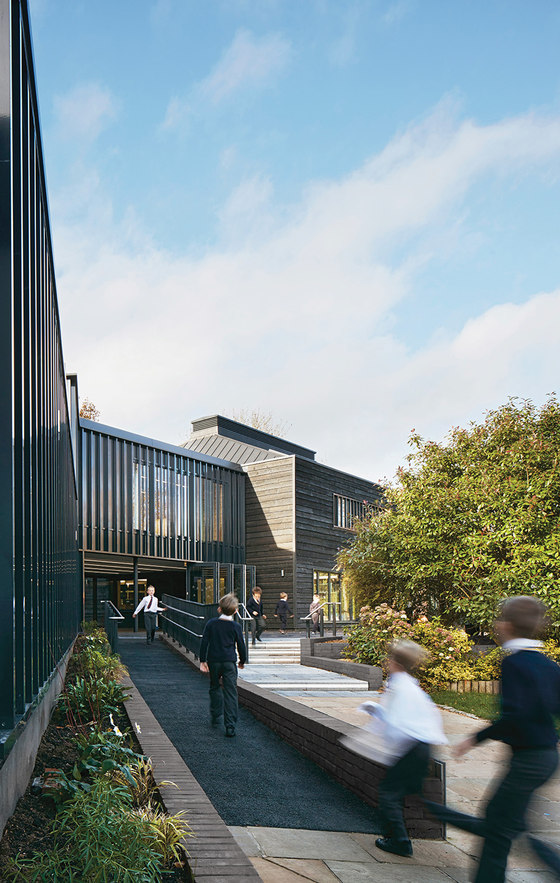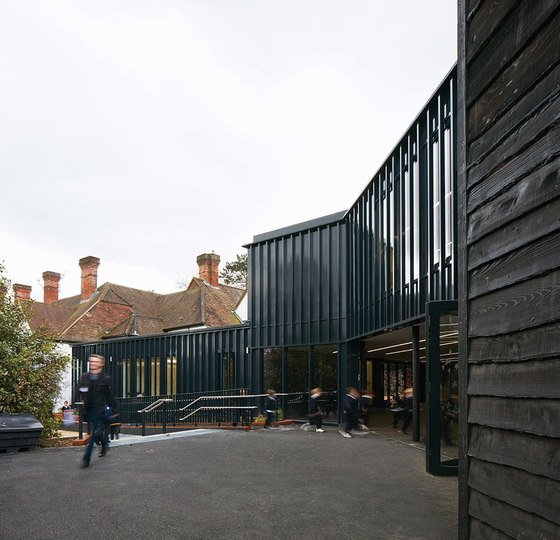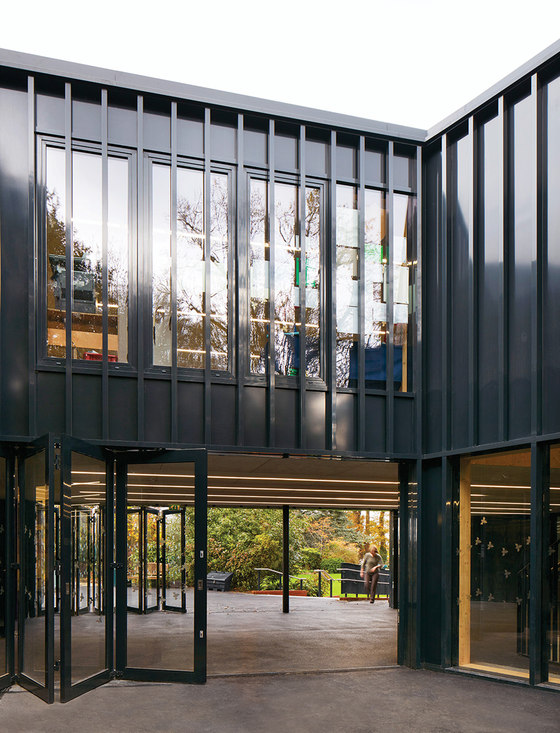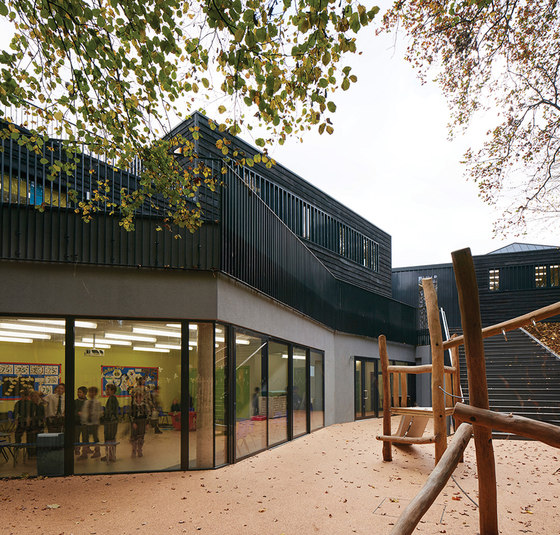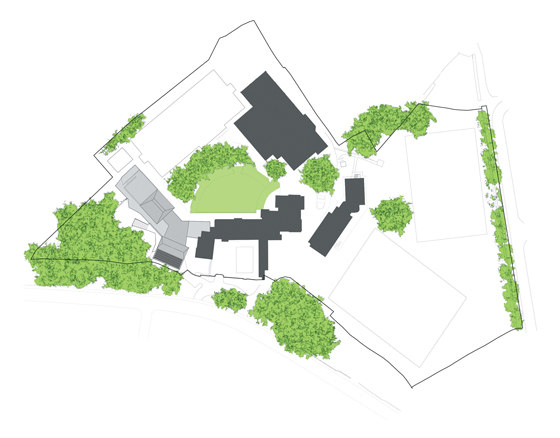“36 little boys joined us in September and I was amazed how quickly they settled into school life. For the first time, the boys started school in a building designed with them in mind, providing spaces where they can be curious, reflective and enthusiastic in their learning.”
Deborah Battersby, Head of Pre-Prep
Davenies is a school in Beaconsfield, providing education for boys aged 4 to 13. Established in 1940 in a listed Farmhouse, it now comprises a collection of historic and modern buildings, set around historic formal gardens and a Dell – a heavily wooden hollow for playing and learning. Crucial to its success is the school’s holistic approach to learning, based on engaging the children with nature and maximising their connection to the natural world around them.
In 2012 DSDHA were appointed to carry out the final phase of a 20-year masterplan to replace some of the most outdated blocks and provide a new library, a hall and ten classrooms for Reception level through to Year-4 each with access to generous outdoor learning areas. Our intervention – with its unusual external black ‘waney’ edged timber finish and its neutral interiors – allows the sense of the architecture to recede, shifting the focus on the children’s pedagogical activities and their connection to the mature landscape outside. This process of ‘visual editing’ applied to the building and the landscape aims at stimulating the children to establish a stronger and intimate relationship with nature, something increasingly at risk of being lost in our contemporary urban environments.
Configuration
The design builds on the site’s history as a farm, with an informal typology to deliver a series of distinct yet coherent architectural components echoing the school’s agricultural past. These new components are:
1) The Link, which lightly touches the adjacent listed facade to provide a connection between the new extension and the rest of the school as well as a new library;
2) The Reception/Teaching Wing, providing a smaller scale environment for younger children;
3) The Main Teaching Wing to the north, set around the verdant Dell, and accommodating a new hall below.
These elements are organised around a ground tempered space, which connects the main historic garden of the campus to the Dell. The Link can be configured by the school to be left completely open, as a covered passage, or to be enclosed and programmed for different learning activities.
The Dell
While the previous buildings on site turned their backs on the Dell, we made it a key element of our design, with its topography and existing trees determining the form and arrangement of the two wings of our building. The Dell remains discreetly separated from the rest of the school and well screened from the road nearby; we exploited the site’s inherent morphology to create a protected outdoor area where the children can play freely, learning with their whole bodies and not just their minds.
At the lower level the Dell blurs its boundaries with a playground overlooked by a glazed hall, offering an extra indoor play area for the pupils. By carefully studying and fully exploiting the site’s sloping topography we could make the most of the volume and carve out this additional space for the school, opening up an area which would have otherwise solely accommodated the plantroom and substructures.
The building offers the pupils further ways to experience the verdant surrounding of the woodland and the gardens. For example several large terraces, connected to each new wing at different levels, are used as outdoor learning areas, opening up views onto the wooded hollow. The classrooms at ground level open out onto a terrace connecting to the Dell via a generous external stair, which can act as informal auditorium.
Historical and Typological Research
Externally, great care was taken in finding a material that echoed the informal ambitions of the teaching within, yet resonated with the listed building close by. Research lead to the choice of a black ‘waney’ edged timber cladding, which responds to local precedents, while providing a striking contrast to the surrounding greenery. Its colour helps the scale of the building become less manifest so that the setting of the historic site is kept in balance.
After extensive inhouse research and iterative negotiations with the local planning authority and the heritage officer, this scheme achieved planning permission and listed building consent via delegated power. A testament to the commitment of the team and the level of trust established with all stakeholders.
Interiors: Materials and Finishes
From a logistical and structural point of view cross- laminated timber panels act as the primary support and provide efficient low carbon enclosure, as well as fast on-site assembly, due to the constraints of the school’s timetable. Internally this system is left exposed in certain areas to let the natural material contribute to the sense of appreciation of the environment, providing pupils with the opportunity to see how the building is made. The connection with the surrounding nature is reinforced by the use of different shades of a green colour finish to the window reveals. This detail subtly animates the neutral interiors by playing with the light and the variations of colours and patterns of the woodland outside.
Biophilic Design
The new school offers a variety of different ways for the children to engage with nature. In developing this range of opportunities we have paid great attention to the sense of well-being that is generated from having visual access to trees and greenery at all times. This is a phenomenon of designing with tree views that has been the subject of research in health care and it has been termed ‘Biophilic Design’, which has been demonstrated to improve lives and save money for healthcare clients. We have tested ways of applying this principle to the design of domestic and learning environment.
Sustainability
A series of passive design measures, along with the use of a particular external envelope, allowed this school to exceed the energy performance requirements of the building regulations. The fabric performance and services efficiency have been adjusted in order to improve the energy efficiency of the building and the associated services to achieve the target CO2 emissions of 10% lower than the notional building.
Natural ventilation has been maximised by drawing fresh air through the facade and using ventilation shafts, located within the storage zone at the rear of the classroom to create a stack effect. Energy efficient lighting has been used throughout the building and linked to photocells which control the levels of illuminance to provide energy savings.
The use of a tempered space in the Link provides a hybrid environment, accommodating the seasonal requirements of the school. The design integrates low carbon technologies to provide a proportion of the heating and hot water for the development; which were identified as the principle energy demand of the building. As such Air Source Heat Pumps (ASHP) were considered the suitable technology for the development.
Davenies School was awarded a RIBA South Award in April 216. The awards recognise architectural excellence and sustainability and buildings that are brought to life by creative and innovative design. The project will now be considered for the National Awards later this year.
The RIBA commended it as:
“a robust and joyful building which is at the same time calming and nurturing. Within the constrained and sometimes pastiche surroundings of Beaconsfield, this building challenges the notion of what education buildings are and can be, and it will stimulate the wider public to think about the power of architecture”.
School Governors of Davenies Preparatory School
DSDHA
Project team:
David Hills, Martin Pearson, Isabel Moreira, John Zhang
Structure Engineer: Jane Wernick Associates
Quantity Surveyor: PT Projects
Contractor: Beard Construction
Services/Sustainability Engineer: Atelier Ten
Landscape Architect: Todd Longstaffe-Gowan
